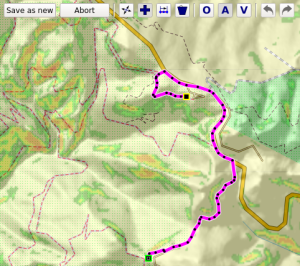
- #Qmapshack build findproj4.cmake install
- #Qmapshack build findproj4.cmake generator
- #Qmapshack build findproj4.cmake free
Running CMake from the Command Lineīefore running CMake, make sure you have the required dependencies for your project and platform. If you re-run CMake on the same binary folder, many of the slow steps are skipped during subsequent runs, thanks to the cache. In a more sophisticated project, the configure step might also test the availability of system functions (as a traditional Unix configure script would), or define a special “install” target (to help create a distributable package). Generates a header file demo-config.h in the binary folder, which will be included from C++ code.Finds the header files and libraries for SDL2 and OpenGL.For example, in our sample CMakeDemo project, the configure step also:
#Qmapshack build findproj4.cmake generator
The type of build pipeline generated depends on the type of generator used, as explained in the following sections.Īdditional things may happen during the configure step, depending on the contents of CMakeLists.txt. If the configure step succeeds – meaning CMakeLists.txt completed without errors – CMake will generate a build pipeline using the targets defined by the script.

Each target represents an executable, library, or some other output of the build pipeline. This script is responsible for defining targets. The CMakeLists.txt script is executed during the configure step. No matter how you run it, it performs two steps: the configure step and the generate step. The Configure and Generate StepsĪs you’ll see in the following sections, there are several ways to run CMake. Instead, simply re-run CMake each time you clone the project to a new folder. You aren’t meant to submit the generated build pipeline to source control, as it usually contains paths that are hardcoded to the local filesystem. (You can, and will, re-run CMake several times on the same binary folder.) Cache variables include user-configurable options defined by the project such as CMakeDemo’s DEMO_ENABLE_MULTISAMPLE option (explained later), and precomputed information to help speed up CMake runs. This is where cache variables are stored. It’s a single text file in the binary folder named CMakeCache.txt. You can even create several binary folders, side-by-side, that use different build systems or configuration options. A common practice is to create a subdirectory build beneath CMakeLists.txt.īy keeping the binary folder separate from the source, you can delete the binary folder at any time to get back to a clean slate. You can create the binary folder anywhere you want. The binary folder is where CMake generates the build pipeline. The source folder is the one containing CMakeLists.txt.

To generate a build pipeline, CMake needs to know the source and binary folders. A build pipeline might be a Visual Studio. The Source and Binary FoldersĬMake generates build pipelines.
#Qmapshack build findproj4.cmake install
You can also install it through MacPorts, Homebrew, Cygwin or MSYS2. In Unix-like environments, including Linux, it’s usually available through the system package manager. If you don’t have CMake yet, there are installers and binary distributions on the CMake website. However, I recommend reading the first two sections first.
#Qmapshack build findproj4.cmake free
The information here applies to any CMake-based project, so feel free to skip ahead to any section.


 0 kommentar(er)
0 kommentar(er)
